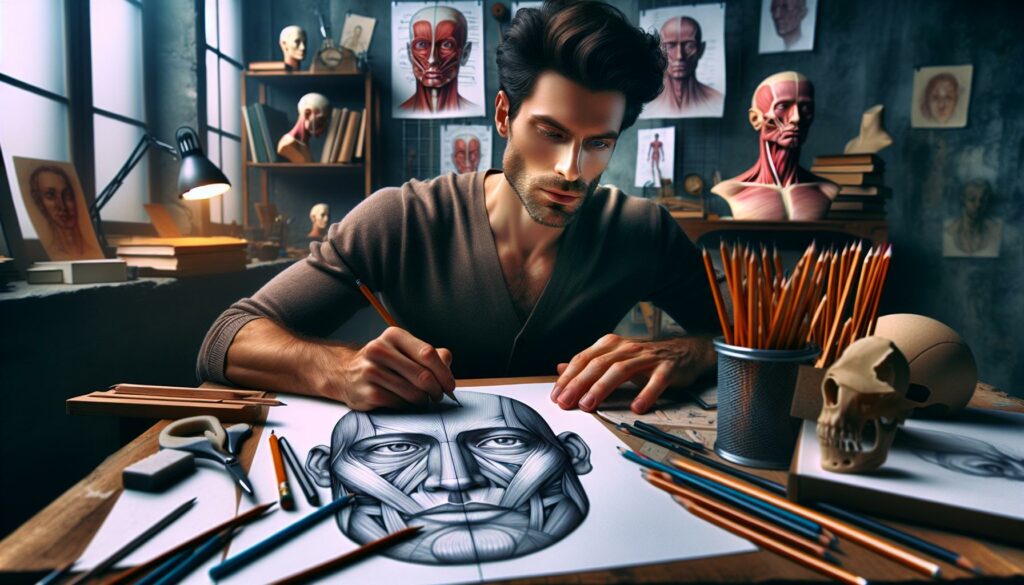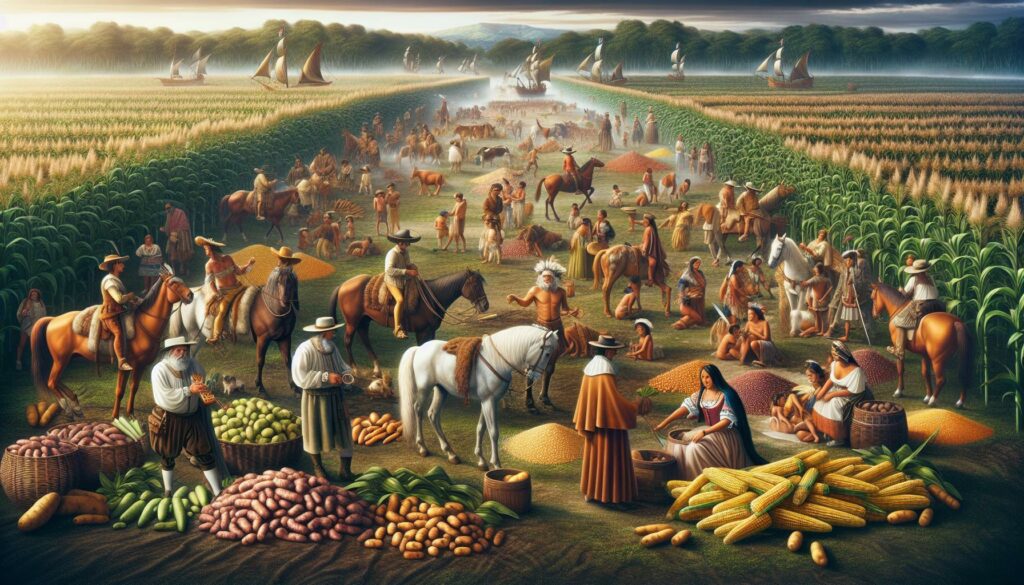When it comes to understanding the complexities of the human nervous system, cranial nerves play a crucial role. I’ve always found it fascinating how these nerves control everything from facial expressions to sensory functions. Drawing the face with an emphasis on cranial nerves not only enhances my artistic skills but also deepens my appreciation for anatomy.
Key Takeaways
- Understanding Cranial Nerves: Recognizing the role of cranial nerves is essential for depicting facial features accurately, as they influence both movement and sensation.
- Key Functions of Cranial Nerves: Familiarize yourself with primary cranial nerves affecting the face, including the facial nerve (Cranial Nerve VII) for expressions and the trigeminal nerve (Cranial Nerve V) for sensation and chewing.
- Drawing Techniques: Utilize quality materials and a structured approach for cranial nerve face drawing—start with outlines, identify nerve locations, and finalize with shading for depth.
- Facial Expressions and Anatomy: Each facial expression depends on precise cranial nerve activation, making it crucial to understand their pathways to convey emotions effectively in your artwork.
- Challenges in Accurate Representation: Overcome common hurdles like misrepresenting nerve pathways and capturing subtle facial expressions through continuous practice and reference to anatomical resources.
Cranial Nerve Face Drawing
Cranial nerves play a crucial role in the functionality of the face. They facilitate communication between the brain and various facial structures, influencing both movement and sensation.
Importance of Cranial Nerves in Facial Anatomy
Understanding cranial nerves enhances my ability to depict facial features accurately. Each cranial nerve contributes to specific functions, including muscle control and sensory perception, vital for nuanced facial expression. For instance, the facial nerve (Cranial Nerve VII) controls the muscles responsible for facial expressions, while other nerves manage taste and sensation. Recognizing these roles allows me to create more expressive and anatomically correct drawings.
Overview of Cranial Nerve Functions
Cranial nerves serve distinct functions that impact daily activities. Here’s a breakdown of the primary cranial nerves related to facial anatomy:
| Cranial Nerve | Function |
|---|---|
| I | Smell (Olfactory) |
| II | Vision (Optic) |
| III | Eye movement and pupil constriction |
| IV | Eye movement (Superior oblique muscle) |
| V | Sensation from the face and chewing |
| VI | Eye movement (Lateral rectus muscle) |
| VII | Facial expressions, taste, and salivation |
| VIII | Hearing and balance |
| IX | Taste, swallowing, and salivation |
| X | Heart rate and digestion |
| XI | Neck and shoulder movement |
| XII | Tongue movement |
Each nerve has specific roles that facilitate intricate bodily functions. Familiarizing myself with these connections enhances the realism of my artistic representations of the face.
Techniques for Cranial Nerve Face Drawing
Effective cranial nerve face drawing requires the right tools and a systematic approach. Utilizing both quality materials and a clear process leads to improved anatomical accuracy and expression in each drawing.
Basic Drawing Tools and Materials
- Pencils: I use a range of graphite pencils, from HB for initial sketches to 2B and 4B for shading and detailing. These allow for versatility in line quality.
- Erasers: A kneaded eraser helps in refining shapes without damaging the paper, useful for making subtle adjustments.
- Paper: I prefer sturdy sketch paper or a drawing pad with a smooth surface, which aids in achieving clean lines and detailed work.
- Reference Images: High-quality images of faces, highlighting cranial nerves, serve as useful references to ensure accurate representation.
- Coloring Materials: Colored pencils or markers can enhance drawings by adding depth and realism.
- Gather References: I start by collecting anatomical references that clearly show cranial nerves related to facial features.
- Outline the Face: I sketch a basic outline of the head, ensuring proper proportions and the placement of features.
- Identify Nerve Locations: I mark positions of key cranial nerves on the outline, using light pencil strokes for easy adjustments.
- Draw Facial Features: I add details of the eyes, nose, mouth, and ears, paying close attention to how cranial nerves influence their expressions.
- Add Nerve Pathways: I outline the pathways of the cranial nerves, illustrating how they connect to the facial muscles.
- Shading and Texture: I incorporate shading to create depth, focusing on areas that correspond to muscle movement influenced by cranial nerves.
- Final Touches: I review the drawing for accuracy and make refinements, ensuring all aspects reflect both anatomical correctness and artistic expression.
Through these techniques, I develop a robust understanding of cranial anatomy, which enhances both my artistic skills and knowledge of facial dynamics.
Key Cranial Nerves Involved in Facial Expressions
Cranial nerves play a critical role in controlling facial expressions. Understanding the specific functions of these nerves enhances my ability to create accurate and expressive face drawings.
Facial Nerve (Cranial Nerve VII)
The facial nerve, also known as cranial nerve VII, is crucial for facial expression. It innervates the muscles responsible for movements like smiling, frowning, and raising eyebrows. The nerve emerges from the brainstem and travels through several structures, branching out to control the muscles of the face. Knowing the pathways of the facial nerve helps me depict expressions that convey emotion accurately. Damage to this nerve can lead to facial paralysis or weakness, further emphasizing its significance in facial dynamics.
Trigeminal Nerve (Cranial Nerve V)
The trigeminal nerve, or cranial nerve V, has both sensory and motor functions related to the face. It consists of three branches: the ophthalmic, maxillary, and mandibular nerves. The sensory aspect provides sensation to the skin, mucous membranes, and sinuses of the face. The motor component controls muscles involved in chewing. Familiarity with the trigeminal nerve’s functions assists in understanding the facial structure and its interactions with expressions. Accurate representation of areas affected by this nerve, like the jaw or cheeks, enhances the realism in my drawings.
Common Challenges in Cranial Nerve Face Drawing
Cranial nerve face drawing presents unique challenges that demand precision and understanding of facial anatomy. Two primary hurdles often arise: misrepresenting nerve pathways and capturing facial expressions accurately.
Misrepresenting Nerve Pathways
Misrepresenting nerve pathways occurs frequently when artists lack familiarity with cranial nerve locations and functions. Each cranial nerve plays a distinctive role, influencing specific facial movements and sensations. For instance, inaccurately depicting the facial nerve’s trajectory may lead to a failure in conveying expressions like smiling or frowning effectively. Ensuring correct representation involves thorough study of anatomical diagrams and models. Cross-referencing with reliable medical texts or online resources helps reinforce my understanding of nerve pathways, enhancing both the accuracy of my drawings and their expressive quality.
Capturing Facial Expressions Accurately
Capturing facial expressions accurately poses another significant challenge. Each expression relies on the precise activation of various cranial nerves, which control muscle engagement and relaxation. Subtle variations in features can result from slight changes in nerve activation. For example, a genuine smile engages different muscles compared to a forced one. Developing the skill to observe and replicate these nuances requires continuous practice and reference to live models or photographs. Incorporating dynamic sketches that depict various emotional states enhances my ability to depict expressions more convincingly, adding depth and realism to my artwork.



